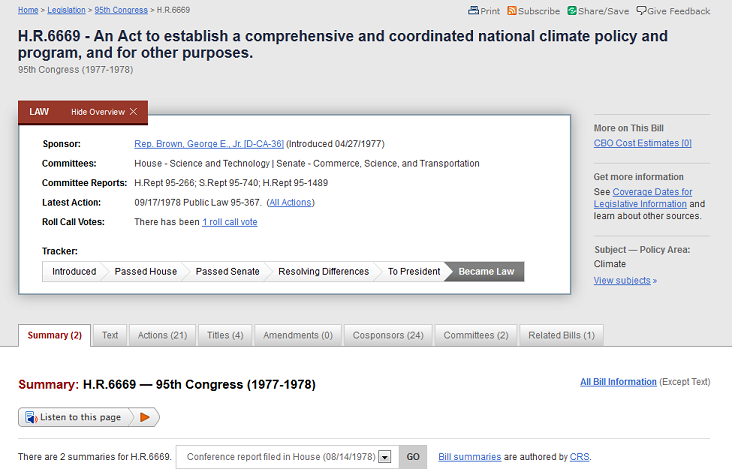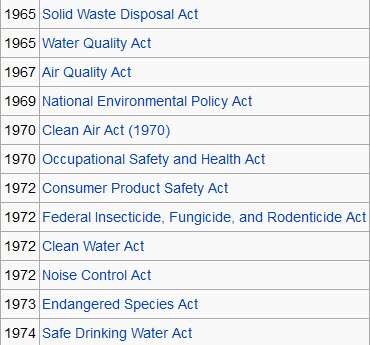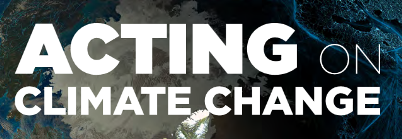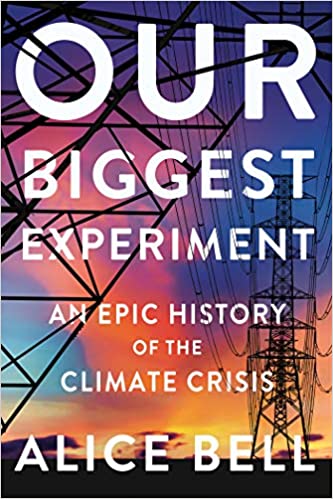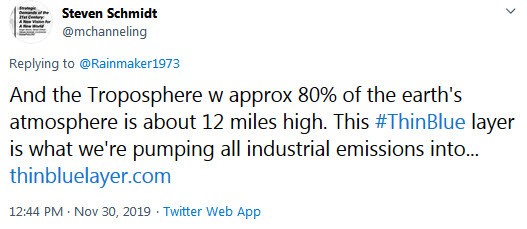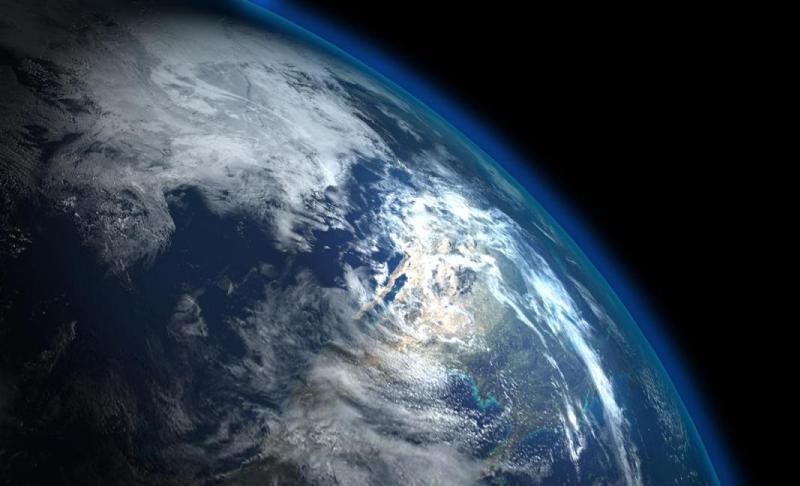File:Atmospheric Experiment of Humanity.jpg: Difference between revisions
Siterunner (talk | contribs) No edit summary |
Siterunner (talk | contribs) No edit summary |
||
| Line 161: | Line 161: | ||
[[Category:Climate Migration]] | [[Category:Climate Migration]] | ||
[[Category:Climate Policy]] | [[Category:Climate Policy]] | ||
[[Category:Democracy]] | |||
[[Category:Desertification]] | [[Category:Desertification]] | ||
[[Category:Digital Citizen]] | [[Category:Digital Citizen]] | ||
Revision as of 21:52, 3 December 2021
"We’re running the most dangerous experiment in history right now, which is to see how much carbon dioxide the atmosphere can handle before there is an environmental catastrophe... The greater the change to the chemical composition of the physical, chemical makeup of the oceans and atmosphere [due to increased carbon emissions], the greater the long-term effect will be... [W]hy would you run this crazy experiment to see how bad it'll be? We know it's at least some bad, and the overwhelming scientific consensus is that it'll be 'really bad'." -- Elon Musk
"We are beginning to realize the extent of an existential experiment humanity is conducting in the atmosphere of the planet, the "Thin Blue Layer". The Anthropocene era is a gathering storm that is changing 'nature' as nature used to be... Our challenge is to use our native intelligence to protect the life-enabling atmosphere, to make decisions that sustain and benefit life today and for future generations." -- Steven Schmidt
○ ○ ○ ○ ○ ○ ○ ○ ○ ○ ○ ○ ○ ○ ○ ○ ○
Response from the GreenPolicy360:
GreenPolicy360 Siterunner: To answer the 'Biggest Experiment' question, 'Where were the activists in all of this?', we were there 'out in front'. We, environmental activists, were working with serious intent and all due diligence to gather the facts and make the global warming case that had to be made. Atmospheric and earth science and then activism, with facts and data, came to the forefront.
In the 1970s and 80s, and through the 1990s, a key point person in the U.S. Congress was George E. Brown of the House of Representatives Science Committee. George Brown was a leader of the National Academy of Sciences scientific work studying climate. George prepared and authored the legislation that put the scientists studies into action. As a longtime friend, I watched him and assisted him as I could over the years, over decades in his role in the U.S. House of Representatives as a member, then chair of the House Science Committee. George E. Brown was a visionary and led an intensely dedicated and activist effort on the environmental, earth science, and climate front.
His work included authoring the first National Climate Act in 1978. Look closely...
At the Beginning of U.S. Science on Global Warming, Strategies & Planning
Energy and Climate Report, 1977, National Academy of Sciences / 175 pp. / PDF via GreenPolicy360
National Climate Program Act, 1978 / PDF
The first federal program is established to initiate and coordinate federal studies; scientifically assess issues and risks of human-caused climate change, propose action and responses.
1978, the First Climate Act
Congressman Brown, the drafting and passage in 1977 of the First U.S. Federal Climate Report
National Climate Program Act, Public Law 95-367
National Climate Program Act of September 1978
In 1979 came a first follow-on National Science Academy report that was prescient, and accurate, in its global warming predictions.
George Brown and your GreenPolicy360 siterunner first began our friendship in 1965 as the new Congressman joined the Committee on Science & Technology, a role he would have over the next 35 plus years. George's deep green environmental work on the front lines of science inspired your GreenPolicy siterunner. The range and depth, and success, of the environmental programs the Congressman envisioned, initiated, and oversaw was astounding to my young mind.
Begin with his National Climate Act, then go on to see how an array of science was put in place for decades of ongoing programs and action.
Via Wikipedia / https://en.wikipedia.org/wiki/George_Brown_Jr.
Brown was known as a champion for science. He left behind a deep and expansive legacy that has shaped science and science policy in America. Among some of his many accomplishments during his service on the House Science Committee:
• Established the first federal climate change research program in the Federal Climate Program Act of 1978
• Established the Office of Science and Technology Policy
• Established the Environmental Protection Agency
• Established the Office of Technology Assessment
Look at any of the founding work that was set in motion ...
• George Brown on the Omnibus Environmental Bill, 1969
• https://www.greenpolicy360.net/w/Ethics_and_Climate_Change
• @GreenPolicy360, 'The beginning of the modern environmental era'
Look at the record of the 'environmental era'...
Unprecedented environmental protection that continues to this day...
○ ○ ○ ○ ○ ○ ○ ○ ○ ○ ○ ○ ○ ○ ○ ○ ○ ○ ○ ○ ○
○ ○ ○ ○ ○ ○ ○ ○ ○ ○ ○ ○ ○ ○ ○ ○ ○ ○ ○ ○ ○
'The Biggest Experiment and .... Externalities - Emissions - Toxic Chemicals
NASA
<addthis />
○
File history
Click on a date/time to view the file as it appeared at that time.
| Date/Time | Thumbnail | Dimensions | User | Comment | |
|---|---|---|---|---|---|
| current | 19:00, 10 July 2021 |  | 519 × 574 (201 KB) | Siterunner (talk | contribs) |
You cannot overwrite this file.
File usage
The following 15 pages use this file:
- Climate News
- Earth Science Research from Space
- Earth and Space, Politics
- Look at how thin our atmosphere is
- Our Biggest Experiment
- Planet Citizens, Planet Scientists
- File:Atmosphere Science.jpg
- File:Earth-upper-atmosphere-NASA.jpg
- File:Earth Summit 1992-s.png
- File:Earth Summit 1992.jpg
- File:Earthatmosphere iss23 annotated nasa.jpg
- File:From 1968 to 1992 -- and the Journey continues....png
- File:Science on climate change.jpg
- File:ThinBlueLayer - July 26 2016.jpg
- File:You can manage only what you can measure Dr David Crisp, OCO-2, June 2014 m.jpg
- About Us
- Air Quality
- Air Pollution
- Antarctica
- Anthropocene
- Arctic
- Atmospheric Science
- Citizen Science
- Climate Change
- Climate Migration
- Climate Policy
- Democracy
- Desertification
- Digital Citizen
- Earth Imaging
- Earth Observations
- Earth360
- Earth Science
- Earth Science from Space
- Earth System Science
- Ecology Studies
- Eco-nomics
- Economic Justice
- Education
- Energy
- Environmental Full-cost Accounting
- Environmental Laws
- Environmental Protection
- Environmental Security
- Environmental Security, National Security
- ESA
- Externalities
- Extinction
- Food
- Forests
- Fossil Fuels
- Greenland
- Global Security
- Global Warming
- Green Graphics
- Green Networking
- Green Best Practices
- Green Politics
- Health
- INDC
- Maps
- NASA
- NOAA
- Natural Resources
- Networking
- New Definitions of National Security
- New Economy
- New Space
- Oceans
- Ocean Science
- Online Education
- Planet Citizen
- Planet Citizens
- Planet Citizens, Planet Scientists
- Rainforest
- Renewable Energy
- Resilience
- Sea-level Rise
- Sea-Level Rise & Mitigation
- Seventh Generation Sustainability
- Social Justice
- Solar Energy
- Strategic Demands
- Sustainability Policies
- ThinBlueLayer
- Threat Multiplier
- United Nations
- US Environmental Protection Agency
- Water Quality
- Whole Earth
- Wind Energy
- World Bank
- World Wide Web
- Youth
